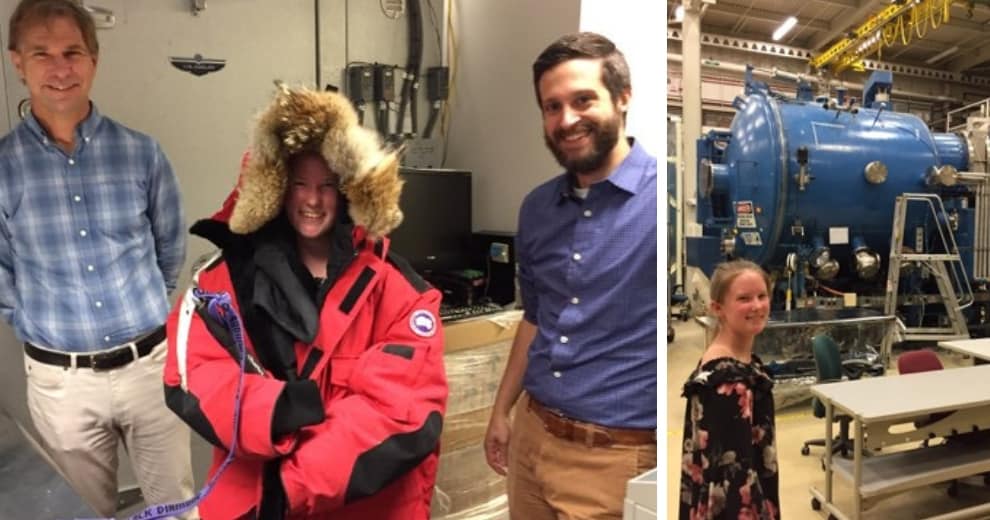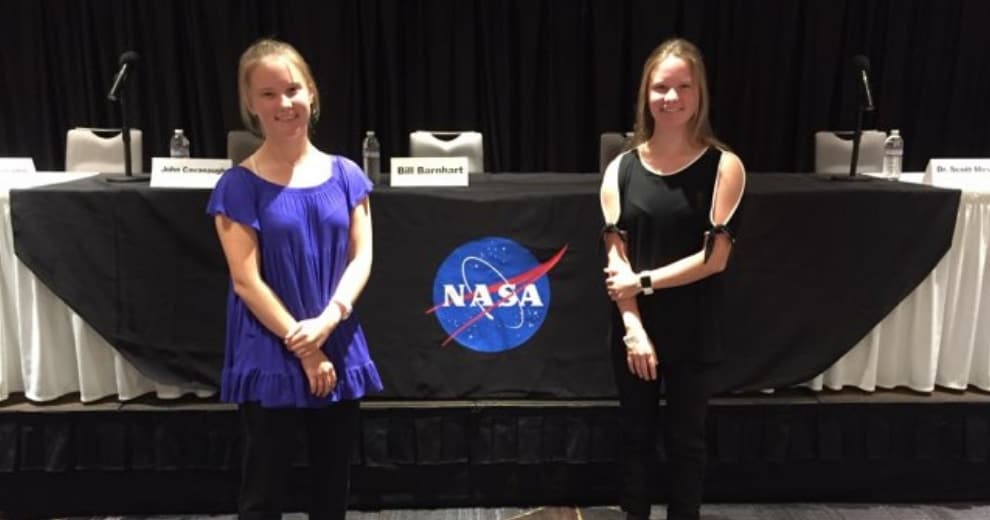When Colette Levens ’21 reached out to Thorsten Markus, head of the Cryospheric Sciences Lab at NASA Goddard Space Flight Center in Maryland, she never imagined her phone call would lead to an extraordinary experience.
At 15 years old, Levens is part of MBU’s Program for the Exceptionally Gifted (PEG) and a Global Honors Scholar. She’s an applied math major, runs cross-country, and has a twin sister, Elyse, who is also a PEG student and Global Honors Scholar at MBU. Holding her own among NASA-level scientists just comes naturally.
“I love being around people who enjoy their work,” she said of her visit to the cryospheric lab. “They are excited about it, so I get excited about it.”
And Levens’ enthusiasm won the day. During the course of her visit, Markus invited her to attend the launch of the Ice, Cloud and land Elevation Satellite-2 (ICESat-2) at Vandenberg Air Force Base in California, a project that had been in the works for 10 years.

On September 15, she, her sister, and their parents watched from a safe distance as the ICESat-2 started its trip into orbit aboard a Delta II rocket.
“It literally lit up the horizon; underneath the morning fog, you could see the tip of the rocket glowing like a beacon,” Levens said. “You could feel the ground rumble.”
NASA’s most technologically advanced ice-monitoring spacecraft, the ICESat-2 holds special meaning for Levens.
Fascinated with snow and ice since she was a child, she participated in winter sports like winter triathlon and figure skating growing up in Michigan, and her interest grew during trips to Moscow and the Arctic Circle while living in Latvia with her family in 2014, when her father was lecturing as a Fulbright Scholar. Levens now hopes to pursue graduate studies in cryospheric science (the study of permafrost, snow, and ice on the surface of the Earth and other planets), and ultimately work for NASA.

A vision of the future. Twin sisters Colette (left) and Elyse Levens at the pre-launch briefing near Vandenberg Air Force Base. Now 15 years old, Colette works toward her goal of one day working for NASA.
MBU faculty are helping her build a bridge to that goal. The scientists she met at NASA Goddard recommended studying technical skills, including specific programming languages and 3-D graphing, that are essential tools in their industry. Professor John Ong in MBU’s Math Department is putting some of those recommendations into action this semester.
“Dr. Ong bought two copies of MATLAB software, so we can learn it together. He’s refreshing his knowledge as we go,” she said. “And I plan to pursue an independent study with Dr. [Joseph] Johnson in math for computer science. I also plan to enhance my fluency in Python, another computer programming language for advanced technologies.”
Levens is also keenly aware that other methods of communication will be essential in achieving her larger goal: making cryospheric sciences — and the information it gives us about how the Earth is changing — more accessible and understandable to more people. That’s why she’s pursuing a minor in peacebuilding and conflict resolution, alongside her coursework in math and physics.
“I have a goal to do research in Antarctica,” she said. “Part of the reason I’m attracted to that is because it brings together scientists from many different countries around the world, and they have to work together toward the same goals.”
For Levens, it’s the combination of the science and the people that’s so compelling; that behind every moment of ignition, there are dedicated teams who must work in collaboration through long hours of hitting walls, and then figure out how to go over, under, around, or through them.
“The launch was amazing and inspiring. Just as incredible was the opportunity to meet the scientists and engineers that created technology that had not previously existed to meet the needs of the mission.”
Colette Levens ’21